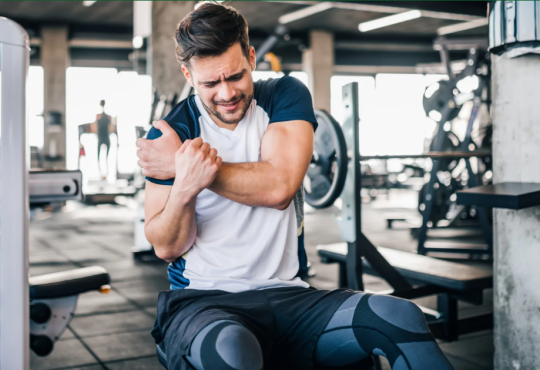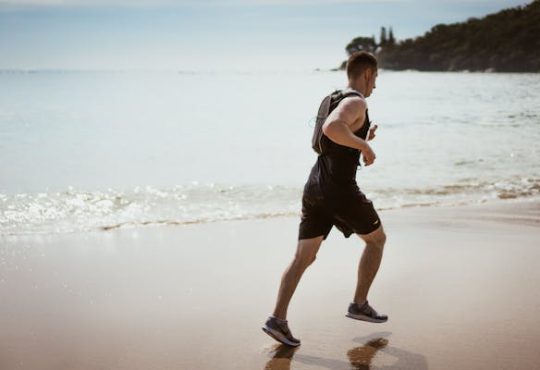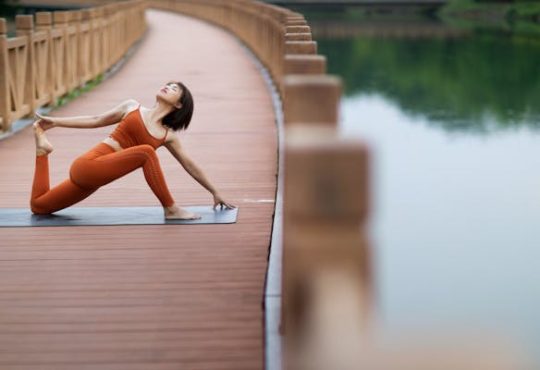Balance exercises are an essential component of fitness that often goes overlooked. While strength, endurance, and flexibility are commonly recognized as core elements of physical fitness, balance is equally important, especially as we age. Balance exercises can help reduce the risk of falls, improve coordination, and increase stability in everyday activities. Whether you’re a seasoned athlete, a senior looking to maintain mobility, or someone recovering from an injury, incorporating balance exercises into your routine can be immensely beneficial.

This comprehensive guide explores the types of balance exercises that can enhance your overall physical fitness. We will cover everything from basic balance exercises to more advanced techniques that challenge both your mind and body.
Understanding Balance: What It Is and Why It Matters
Balance refers to the ability to maintain control over your body’s position, whether you are standing still or moving. It involves a complex interplay between your muscles, bones, and the nervous system. Proper balance allows you to move efficiently and avoid injuries.
Good balance is crucial for everyone, but it’s particularly important for:
- Athletes: Athletes often require dynamic balance in activities like running, jumping, or changing directions quickly.
- Older Adults: As we age, the risk of falling increases due to the natural decline in muscle strength and proprioception (awareness of the body’s position in space). Falls are a leading cause of injury in older adults.
- People Recovering from Injuries: After injury or surgery, rebuilding balance is key to regaining strength and functionality.
- Fitness Enthusiasts: Balance exercises contribute to improved posture, better performance in physical activities, and even mental clarity.
There are several types of balance exercises, each targeting different aspects of balance and stability. These can be categorized into static and dynamic balance exercises, along with exercises that improve proprioception, strengthen the core, and enhance mind-body connection.
1. Static Balance Exercises
Static balance exercises involve maintaining a stable position without any movement. These exercises are ideal for beginners or those recovering from an injury because they are low-impact and focus on controlling your body while stationary.
a. Single-Leg Stand
How to perform:
- Stand on one leg while keeping the other leg slightly bent at the knee.
- Hold the position for 20-30 seconds, then switch legs.
- For an extra challenge, close your eyes or stand on an uneven surface.
Benefits: This simple exercise strengthens your leg muscles and improves balance by forcing your body to stabilize itself.
b. Tree Pose (Yoga)
How to perform:
- Stand on one leg and place the sole of your other foot on the inner thigh of the standing leg.
- Hold your arms in a prayer position or extend them above your head.
- Focus on a fixed point to help maintain balance.
Benefits: Tree pose not only improves balance but also enhances concentration and mindfulness, making it an excellent way to combine physical and mental wellness.
c. Tandem Stance
How to perform:
- Stand with one foot directly in front of the other, heel to toe.
- Hold this position for 20-30 seconds.
- Switch the foot that’s in front and repeat.
Benefits: This exercise is particularly useful for improving gait and posture, and it’s often used in balance assessments for older adults.
2. Dynamic Balance Exercises
Dynamic balance exercises involve maintaining balance while in motion. These exercises are more challenging than static ones and are important for anyone looking to improve balance for everyday movements like walking or athletic activities.
a. Walking Heel to Toe
How to perform:
- Walk forward by placing the heel of one foot directly in front of the toes of the other foot.
- Keep your arms at your sides or extend them for added stability.
- Walk 10-20 steps forward, then turn around and walk back.
Benefits: This exercise improves your balance while walking, enhancing both coordination and control.
b. Step-Ups
How to perform:
- Find a step or bench that’s about knee-height.
- Step up onto the platform with one leg, followed by the other, then step down.
- Repeat for 10-15 repetitions, then switch legs.
Benefits: Step-ups mimic everyday activities like climbing stairs, which makes them functional exercises that improve dynamic balance and leg strength.
c. Lateral Leg Raises
How to perform:
- Stand next to a chair or wall for support.
- Raise one leg out to the side while keeping your torso straight.
- Hold for a few seconds, then lower the leg.
- Repeat 10-15 times per leg.
Benefits: This exercise strengthens the muscles around your hips and thighs, contributing to better balance while walking or standing.
3. Core-Strengthening Balance Exercises
A strong core is essential for good balance. Your core muscles, which include the abdominals, obliques, lower back, and hips, provide stability and support for your entire body. Many types of balance exercises focus on core strengthening.
a. Plank
How to perform:
- Get into a push-up position with your forearms resting on the ground.
- Hold your body in a straight line from head to toe for 20-60 seconds.
- Keep your core engaged throughout the exercise.
Benefits: The plank strengthens your core muscles, which are critical for balance and posture.
b. Bird Dog
How to perform:
- Start on all fours, with your hands under your shoulders and knees under your hips.
- Extend one arm forward and the opposite leg back, keeping your body as stable as possible.
- Hold for a few seconds, then switch sides.
Benefits: This exercise improves balance by engaging your core muscles and challenging your stability.
c. Dead Bug
How to perform:
- Lie on your back with your arms extended toward the ceiling and knees bent at 90 degrees.
- Slowly lower your right arm and left leg toward the floor while keeping your back flat.
- Return to the starting position and repeat on the other side.
Benefits: The dead bug is an excellent core exercise that also enhances coordination and balance.
4. Proprioception Exercises
Proprioception is the body’s ability to sense its position in space, and it plays a crucial role in maintaining balance. Proprioceptive exercises challenge your body to adapt to unstable conditions, which helps improve coordination and balance in everyday movements.
a. Bosu Ball Balance
How to perform:
- Stand on a Bosu ball with both feet and maintain your balance for 30 seconds to a minute.
- For an added challenge, try standing on one leg or closing your eyes.
Benefits: The unstable surface of the Bosu ball forces your body to engage multiple muscles, improving proprioception and balance.
b. Balance Board
How to perform:
- Stand on a balance board with both feet and try to maintain your balance.
- You can also shift your weight from side to side or front to back to increase the challenge.
Benefits: Balance boards improve proprioception, coordination, and overall stability.
c. Foam Pad Balancing
How to perform:
- Stand on a foam pad or soft surface with both feet, and try to maintain your balance for 20-30 seconds.
- To increase the difficulty, try standing on one leg or closing your eyes.
Benefits: Foam pads add an element of instability, which helps improve balance by enhancing your body’s ability to sense and react to changes in position.
5. Balance Exercises for Seniors
As we age, maintaining balance becomes even more critical. Older adults are more prone to falls, which can lead to severe injuries. Incorporating balance exercises into a fitness routine can help seniors stay independent and reduce their risk of falls.
a. Chair Stand
How to perform:
- Sit in a sturdy chair with your feet flat on the floor.
- Stand up slowly, using your legs, and then sit back down.
- Repeat 10-15 times.
Benefits: This exercise strengthens the muscles in the legs and core, which are essential for balance and mobility.
b. Side Leg Raises (Modified)
How to perform:
- Stand next to a chair for support.
- Slowly lift one leg out to the side, keeping your body straight.
- Hold for a few seconds, then lower the leg.
- Repeat 10-15 times per leg.
Benefits: This modified version of lateral leg raises focuses on stability and strength in the lower body, which is essential for balance.
c. Toe Lifts
How to perform:
- Stand with your feet hip-width apart, holding onto a chair for support.
- Slowly lift your heels off the ground, coming onto your toes.
- Lower your heels back to the ground and repeat 10-15 times.
Benefits: Toe lifts strengthen the calf muscles, which play a key role in maintaining balance while walking or standing.
6. Advanced Balance Exercises
For those who have mastered basic balance exercises and are looking for a greater challenge, advanced balance exercises offer a more intense workout. These exercises often involve dynamic movements, unstable surfaces, or added resistance.
a. Single-Leg Deadlift
How to perform:
- Stand on one leg while holding a dumbbell in the opposite hand.
- Hinge at your hips, lowering the dumbbell toward the floor while extending your free leg behind you.
- Return to the starting position and repeat 10-12 times per leg.
Benefits: The single-leg deadlift strengthens the hamstrings, glutes, and core, all while challenging your balance and coordination.
b. Bulgarian Split Squat
How to perform:
- Stand a few feet in front of a bench or step.
- Place one foot behind you on the bench, then lower your body into a lunge position.
- Push through your front heel to return to the starting position.
- Repeat 10-12 times per leg.
Benefits: This exercise targets the legs and core, improving both strength and balance in a challenging, unilateral movement.
c. Jumping Lunges
How to perform:
- Start in a lunge position, with one foot in front and one foot behind.
- Explosively jump, switching legs in the air, and land in a lunge with the opposite foot forward.
- Repeat for 10-15 repetitions per side.
Benefits: Jumping lunges combine dynamic movement with balance, coordination, and lower body strength, making them ideal for advanced athletes.
7. Balance Exercises with Equipment
Incorporating equipment like stability balls, resistance bands, and kettlebells can make balance exercises more effective and engaging.
a. Stability Ball Plank
How to perform:
- Place your forearms on a stability ball and hold a plank position.
- Keep your body in a straight line and engage your core.
- Hold for 30-60 seconds.
Benefits: The instability of the ball increases the challenge for your core and improves overall balance.
b. Resistance Band Side Steps
How to perform:
- Place a resistance band around your thighs, just above your knees.
- Step to the side with one foot, followed by the other, maintaining tension in the band.
- Take 10-15 steps in one direction, then reverse.
Benefits: This exercise strengthens the hip muscles, which are crucial for maintaining balance.
c. Kettlebell Swings
How to perform:
- Hold a kettlebell with both hands.
- Swing the kettlebell between your legs, then use your hips to drive it forward and upward.
- Repeat for 10-15 repetitions.
Benefits: Kettlebell swings improve dynamic balance, coordination, and strength, particularly in the hips and core.
Incorporating various types of balance exercises into your fitness routine can lead to numerous benefits, from improved stability and coordination to better posture and reduced risk of injury. Whether you’re a beginner looking to improve basic balance or an athlete seeking advanced challenges, balance exercises are key to achieving better overall fitness. Remember that consistency is essential—balance, like any other aspect of fitness, improves with regular practice.
As you integrate these exercises into your routine, you’ll notice improvements not only in your physical strength and stability but also in your ability to focus and maintain control over your movements. Balance training truly enhances both body and mind, making it a vital part of a well-rounded fitness program.





